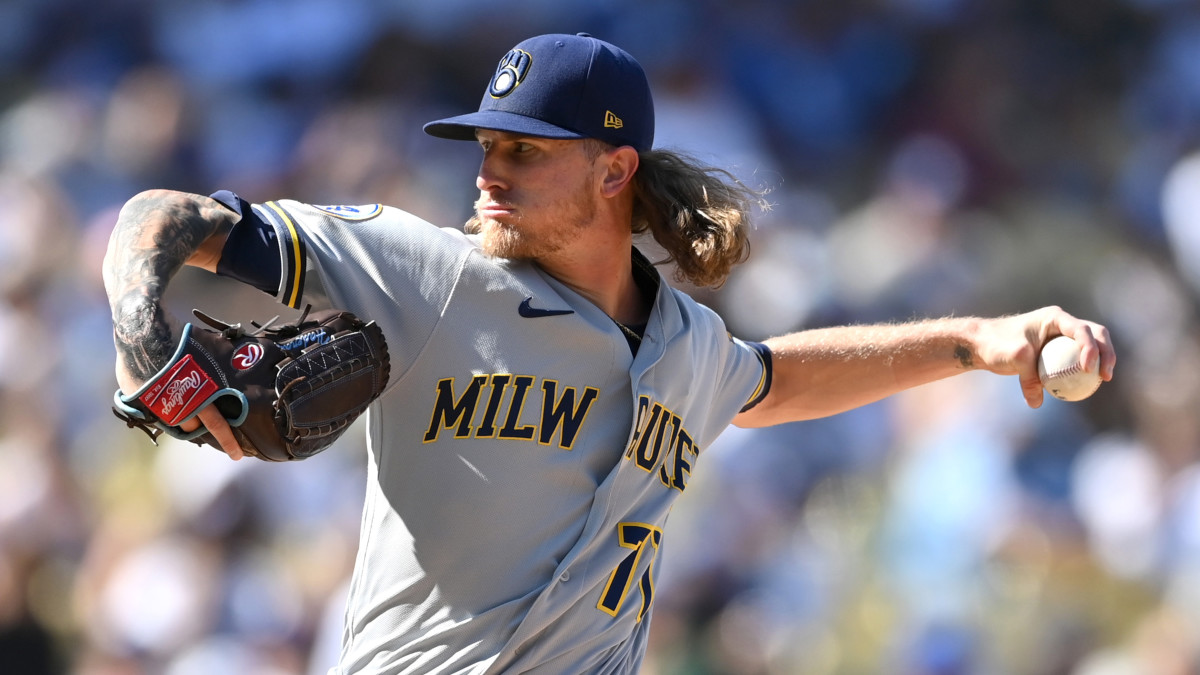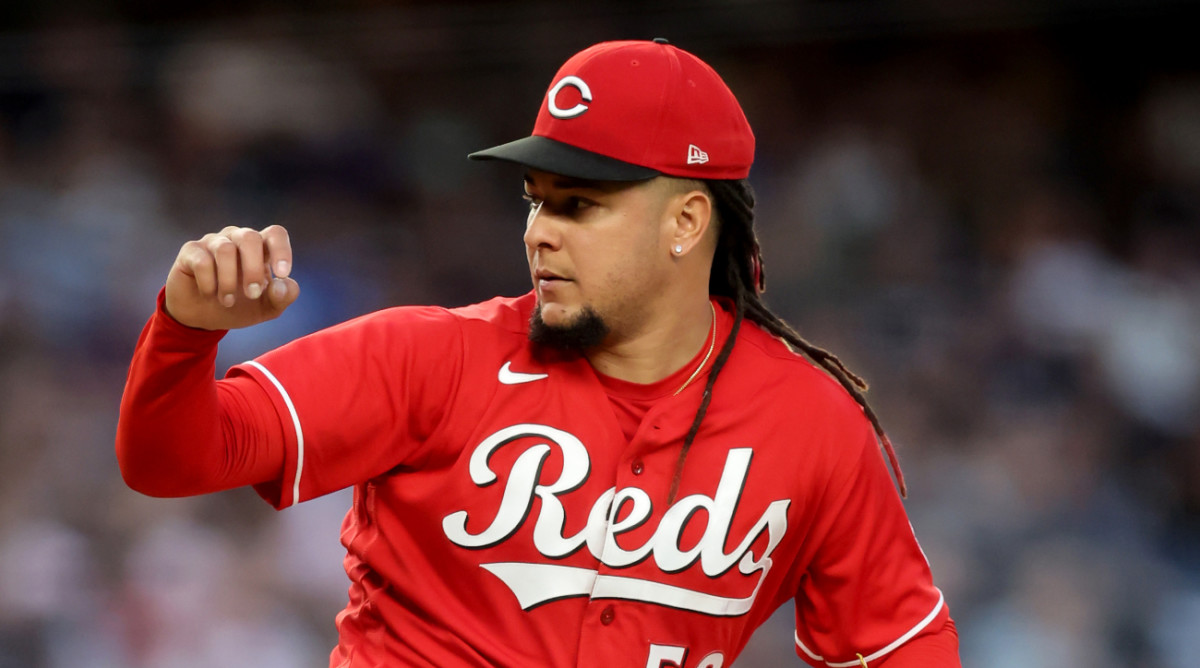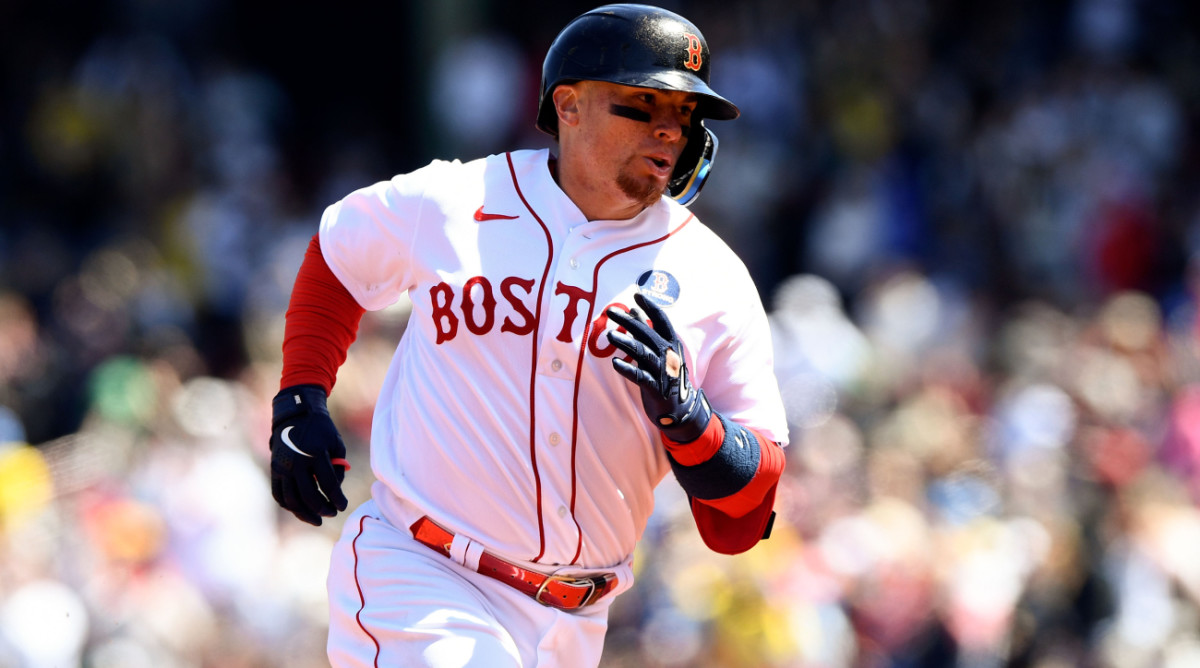MLB Trade Deadline Winners and Losers
Well, that was a wild one. Congratulations on making it to the other side of the trade deadline—after the biggest deal in recent memory plus a whole bunch of others. Here’s a rundown of who won, who lost,and who fell somewhere in the middle:
WINNERS
San Diego Padres
They added a generational talent in his prime (Juan Soto), a serious rental bat (Josh Bell), an elite closer (Josh Hader) and a quality utilityman (Brandon Drury). They also moved Eric Hosmer (albeit while needing to eat most of his salary). Yes, this required giving up most of their top prospects, as well as first baseman Luke Voit and reliever Taylor Rogers. But that’s what it takes to get a player with the proven track record of Soto—who, it’s worth repeating, is still just 23 years old with two full additional seasons under team control. Simply put, San Diego is much better today than it was yesterday. An offense that was previously just okay now looks fearsome. They have enough depth to make some noise in October. Is it enough to win the division? Probably not. But that says more about the lead the Dodgers have built in the NL West than it does about the Padres. It’s certainly enough to make this team a whole lot more competitive down the stretch and into the playoffs. (Plus, it’s worth noting they did manage to hang on to some of their big prospects: catcher Luis Campusano and shortstop Jackson Merrill are still here.) And oh, yeah, they also extended Joe Musgrove. What a week for A.J. Preller.

New York Yankees
They’d checked off all their major needs before Deadline Day: They got a left-handed hitter (Andrew Benintendi), a starter (Frankie Montas) and some bullpen help (Lou Trivino and Scott Effross). That would have been enough to qualify this as a win. But they took it one step further right before 6 p.m. struck on Tuesday—New York moved starter Jordan Montgomery to St. Louis for outfielder Harrison Bader. A true center fielder wasn’t exactly a pressing need, but it was certainly a “nice to have,” and by getting Bader, the team now has one of the best possible defenders as an option. There are some fair questions to ask: Bader’s currently on the IL with plantar fasciitis, and while he’s supposed to return this season, there isn’t a firm timetable, and you can question whether the Yankees really had enough starting pitching depth to feel comfortable dealing Montgomery. But overall? They addressed every need they had, and then some.
Minnesota Twins
The Twins needed pitching, and they got it. With starters Tyler Mahle and relievers Jorge López and Michael Fulmer, Minnesota landed the depth to fix their biggest flaw. (They also got a backup catcher in Sandy Leon from Cleveland.) They’ve been the best team by default in a bad division all year. Now, they look much closer to being a team who’s actually good. And as an added bonus, there was next to no action from the Guardians and White Sox, making these moves even more impactful for the Twins.
Philadelphia Phillies
None of their moves were particularly flashy on their own. But together, they added up, and the Phillies filled just about every hole they had. They now have a real centerfielder (Brandon Marsh). Another starter (Noah Syndergaard). More in the bullpen (David Robertson). A good defensive shortstop (Edmundo Sosa). Collectively, those moves leave this defense somewhat less of a liability and add some sorely needed pitching depth—all while allowing Philly to hold onto most of its top prospects.
Watch MLB games all season long with fuboTV: Start a free trial today.
Seattle Mariners
The M’s were the first to make a splash in this market by getting the best starter available: Luis Castillo. Yes, it required a serious prospect package, but it was always going to. (And Castillo is under team control for next season, too.) Beyond that, while Seattle didn’t make any serious moves, it did pull off a few smaller ones that could end up being quietly useful. On Tuesday, the front office added a backup catcher (Curt Casali), an extra bat (Jake Lamb), and some more pitching depth (Matthew Boyd). But acquiring Castillo alone would have been enough to mark this deadline as a win here.
BACCELLIERI: Castillo Proves Seattle Wants More Than Just a Playoff Berth

Cincinnati Reds
It’s never enjoyable to watch a team sell off whatever it can. But the Reds at least managed to get a lot for what they sold. The prospect hauls for Castillo and Mahle were considerable—top-of-the-org names from Seattle (Noelvi Marte, Edwin Arroyo, Levi Stoudt) and Minnesota (Spencer Steer and Christian Encarncion-Strand). They got more for Drury and Tyler Naquin. The Reds picked up 10 minor-leaguers in total this deadline. A winning campaign is still a long way off in Cincinnati. But if a team is going to trade as much as this one did … they can’t ask for much better in terms of what they get back.
DRAWING EVEN
New York Mets
Yes, they made some much needed additions to the lineup: Daniel Vogelbach, Darin Ruf and Naquin. They picked up one reliever in Mychal Givens. But they didn’t get another catcher? A lefty for the bullpen? This is the best team the Mets have had in years. But they have a narrow lead in the NL East (over a Braves team who got better on Tuesday), and it’s somewhat disappointing to see them pass up the opportunity to address some clear, obvious needs.
Milwaukee Brewers
No one wants to trade an All-Star closer like Hader. But given that Milwaukee was not going to extend him and had no interest in a hard turn toward a rebuild (good!) ... the front office did about as fine a job as it could have. It brought in another closer to replace him in Rogers and some additional talent, too. Yet they should have also tried to get a little more for the lineup. It wouldn’t have necessarily cost much to make a deal for another outfielder or a bench bat, and this team could have really, really used that for the playoffs.
BACCELLIERI: Making Sense of the Puzzling Josh Hader Trade
Toronto Blue Jays
The good: They shored up their bullpen by adding Anthony Bass and Zach Pop from the Marlins. The bad: Where is the rotation help they needed? And the in-between: Here is Whit Merrifield, too, even though his trade value is as low as it’s been in his career.
Los Angeles Dodgers
They have the best record in the NL, a double-digit lead in the division and the expectation that a few injured players will be on their way back. The Dodgers didn’t need to do anything. But … they’re the Dodgers! It’s still reasonable to hope for more—even if only in the form of acquiring a little more depth. That didn’t happen. They did opt to take a chance on Joey Gallo—who will try to redeem himself in a new locale after his rough first half with the Yankees. But it’s reasonable to wonder why another pitcher or two wasn’t added instead. Fans can at least focus instead on the fact that top prospect Miguel Vargas has been called up. And, you know, the whole aforementioned “best record in the NL” deal.
St. Louis Cardinals
They needed to bolster their rotation, and they did, with Montgomery (from the Yankees) and José Quintana (Pirates). While parting with Bader was no small price to pay for Montgomery, they’re well-situated for that: It just means a commitment to Dylan Carlson as the centerfielder of the future. It’s certainly not a bad deadline! But after so much talk of a splash like Soto or a potential big-name starter … it’s fair to wonder if anything else might have been possible here.
Boston Red Sox
Boston’s deadline was neither good nor bad so much as it was simply confusing. At three games out of a playoff spot, they had a tough choice about whether to sell or buy, and instead they did … both, yet fundamentally, kind of neither? They moved Christian Vázquez but held on to J.D. Martinez. They traded for Hosmer and Tommy Pham. They’re not worse, but they’re not meaningfully better, and if there’s a set direction here, it isn’t obvious.

LOSERS
Chicago Cubs
There’s a case to be made for hanging on to Ian Happ. But keeping Happ and Willson Contreras? When there were multiple teams who should have been interested in picking up a catcher? When it was so obvious he would be leaving that he got a standing ovation in his presumed last game at Wrigley Field? Maybe they weren’t getting exactly what they wanted in trade proposals. But they should have tried to get something.
Baltimore Orioles
This was an unexpectedly tricky spot for the Orioles. There had been no expectation they would start winning this season. But after five miserable years of losing, they found their footing a little ahead of schedule, and they entered the deadline just two-and-a-half games out of the last wild-card berth. A general manager like Mike Elias was never going to deviate from his plan to chase a low playoff seed like that. But the options weren’t “go all in” or “sell as much as possible.” There’s a middle ground there. And the Orioles blew past it. They chose instead to trade their face of the franchise and impending free agent Trey Mancini and their All-Star closer in López. The former is a sad deal that still makes some cold, hard sense. Yet the latter involves a player with two more full seasons of team control! To deal López is a comment not so much on low expectations for this year as it is for next year and the year after. This fanbase—after enduring so much the last few seasons—deserves more.
SELBE: Mancini Trade Offers Cruel Reminder That Orioles’ Rebuild Isn’t Over
Chicago White Sox
It’s an understatement to say that this season has not gone according to plan for the White Sox. Yet there’s still plenty of talent on this roster, and at .500, they’re just three games out of first place in the AL Central. They could have seen this as an opportunity to make a push. Instead, they sat quiet while they watched the Twins pull away.
Colorado Rockies
Look, any time you can decide not to make a single trade, yet extend your 37-year-old closer who would have otherwise been a potentially useful trade chip, you have to do it. That’s just common sense.
More MLB Coverage:
